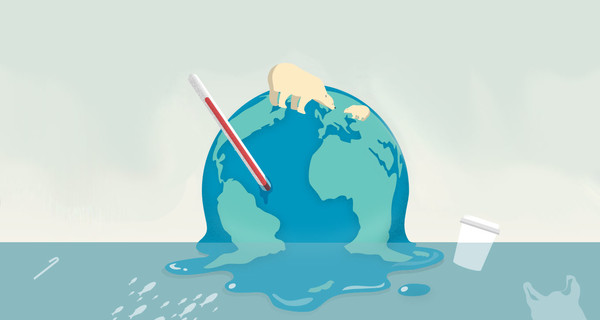
This summer’s heat wave and particularly vicious rains have made a mark on the country. According to a recent report I read online, dozens of people were killed or went missing in the last round of torrential downpours. This was due to widespread flash flooding, mostly in the capital area and Gangwon-do, but which also occurred in other parts of the country. When the nation was not subjected to seemingly endless rain this summer, government advisories on the dangers of excessive heat and humidity were a constant reminder.
This extreme weather is not unique to Korea, of course. In North America and Europe, summer heat waves reached record-breaking temperatures across both continents. There were deaths in the northern parts of the US and Northern Europe due to the heat: since these areas generally have mild summer conditions, many people did not have air conditioning in their homes as it was never deemed necessary.
Traditionally, Korea has been a relatively lucky country when it comes to natural disasters. Yes, the country is struck by the occasional typhoon(but most of those hit our neighbor to the east, Japan) or mild earthquakes(again which are a much bigger problem for Japan). Tornadoes are practically unheard of, and even wildfires are rare in comparison to many other parts of the world. However, due to the recent torrential rains and devastation they brought to Seoul and other areas, it seems that the Korean government is beginning to rethink its strategy on natural disasters.
ePrime Minister Han recently proposed to members of the cabinet that the government form a new disaster response system to combat the effects of climate change. According to a recent article, Han is quoted: “due to climate change, unprecedented disasters have frequently occurred... In line with environmental changes, safety management standards must be drastically strengthened and boldly reorganized to effectively prepare for major disasters in the future.” I believe many would agree with these statements in light of recent events.
Korea, of course, has been a leader in efforts to protect the environment in recent years. Comprehensive recycling programs are implemented in all major cities, and the government has made a big effort to push green technologies such as electric cars. City buses and taxis usually run on CNG, which is cleaner-burning than gasoline or diesel fuel, and widespread high-speed rail offers efficient transportation with a low carbon footprint per passenger.
More could be done, however. Despite what many believe, much of the air pollution which plagues the country in winter and early spring doesn’t just blow over from China(true, some of it does). Most of the smog is actually produced by factories, coal power plants, and heavy construction here in Korea, particularly in and around the capital area. A greater effort could be made to clean up these industries.
But Korea alone is still a relatively small country, although it punches far above its weight economically. Even if Korea manages to solve all its environmental issues, much larger countries such as China, the US, and the EU must take comprehensive steps to address the climate crisis. And how is this going? The EU is the most progressive in this regard, with huge investments in renewable energy, but they still have a long way to go... Their dependence on fossil fuels from Russia is hardly ideal, as recent events have made clear. China is, well, China, and for the US’s part, they have recently decided to axe government subsidies for consumers who buy EVs-made in Korea.
Hopefully, the countries of the world will find a way to work together to fight the climate crisis and mitigate future disasters.


